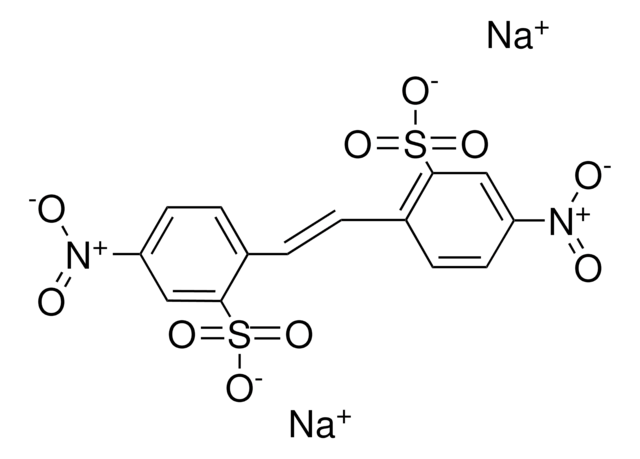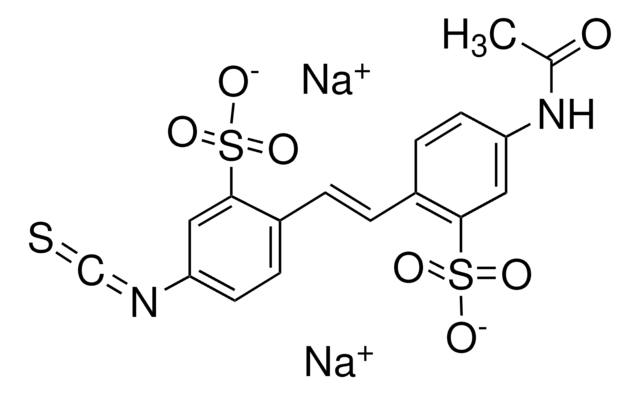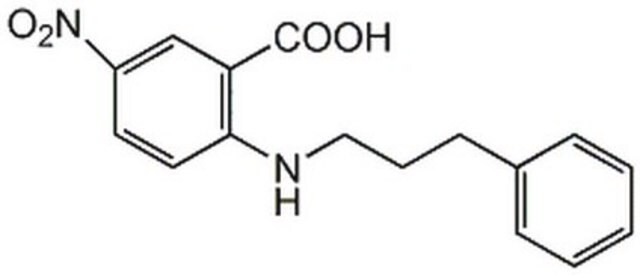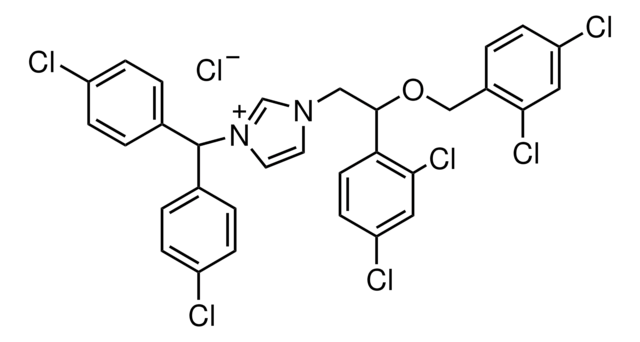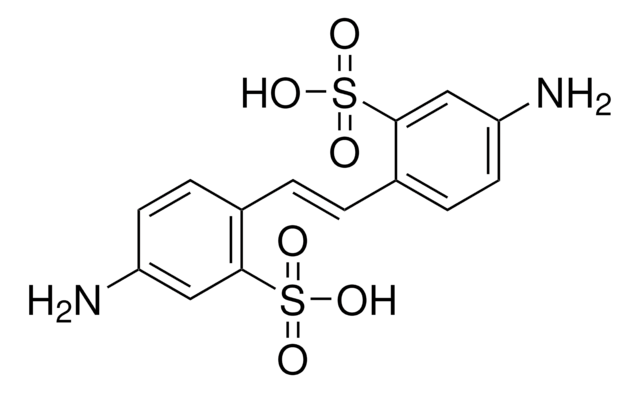Key Documents
D3514
4,4′-Diisothiocyanatostilbene-2,2′-disulfonic acid disodium salt hydrate
≥80% (elemental analysis), powder
Synonim(y):
DIDS, Disodium 4,4′-diisothiocyanatostilbene-2,2′-disulfonate
About This Item
Polecane produkty
Próba
≥80% (elemental analysis)
Postać
powder
przydatność reakcji
reagent type: cross-linking reagent
kolor
yellow
rozpuszczalność
0.1 M potassium bicarbonate: 50 mg/mL
temp. przechowywania
2-8°C
ciąg SMILES
[Na+].[Na+].[O-]S(=O)(=O)c1cc(ccc1\C=C\c2ccc(cc2S([O-])(=O)=O)N=C=S)N=C=S
InChI
1S/C16H10N2O6S4.2Na/c19-27(20,21)15-7-13(17-9-25)5-3-11(15)1-2-12-4-6-14(18-10-26)8-16(12)28(22,23)24;;/h1-8H,(H,19,20,21)(H,22,23,24);;/q;2*+1/p-2/b2-1+;;
Klucz InChI
GEPAYBXVXXBSKP-SEPHDYHBSA-L
Szukasz podobnych produktów? Odwiedź Przewodnik dotyczący porównywania produktów
Zastosowanie
- as band3 protein inhibitor in rabbits(19)
- for the inhibition of bicarbonate transporters in brain slice tissue(20)
- as HCO3-/Cl- exchanger (anion exchanger) in embryos(21)
Działania biochem./fizjol.
Hasło ostrzegawcze
Danger
Zwroty wskazujące rodzaj zagrożenia
Zwroty wskazujące środki ostrożności
Klasyfikacja zagrożeń
Eye Irrit. 2 - Resp. Sens. 1 - Skin Irrit. 2 - STOT SE 3
Organy docelowe
Respiratory system
Kod klasy składowania
11 - Combustible Solids
Klasa zagrożenia wodnego (WGK)
WGK 3
Temperatura zapłonu (°F)
Not applicable
Temperatura zapłonu (°C)
Not applicable
Środki ochrony indywidualnej
dust mask type N95 (US), Eyeshields, Faceshields, Gloves
Certyfikaty analizy (CoA)
Poszukaj Certyfikaty analizy (CoA), wpisując numer partii/serii produktów. Numery serii i partii można znaleźć na etykiecie produktu po słowach „seria” lub „partia”.
Masz już ten produkt?
Dokumenty związane z niedawno zakupionymi produktami zostały zamieszczone w Bibliotece dokumentów.
Klienci oglądali również te produkty
Nasz zespół naukowców ma doświadczenie we wszystkich obszarach badań, w tym w naukach przyrodniczych, materiałoznawstwie, syntezie chemicznej, chromatografii, analityce i wielu innych dziedzinach.
Skontaktuj się z zespołem ds. pomocy technicznej
